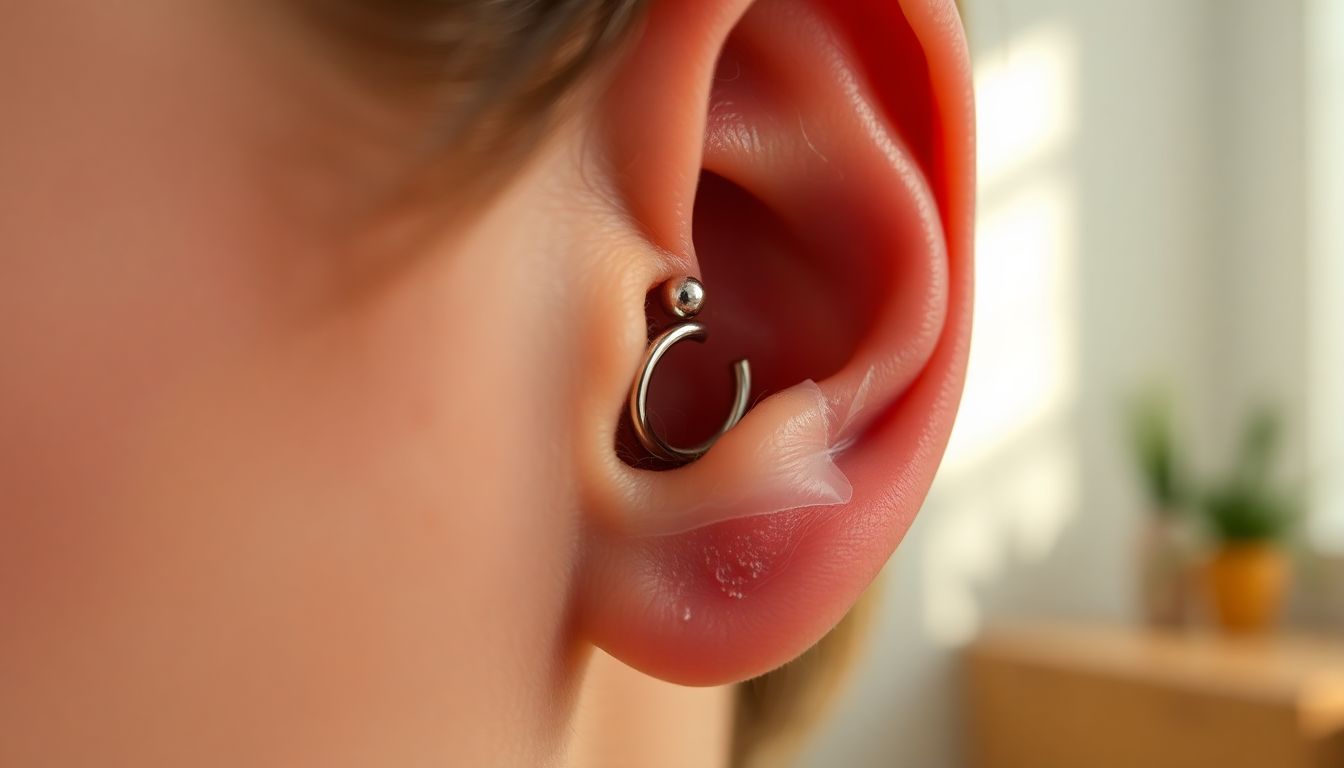How Long Does a Helix Piercing Take to Heal? Everything You Need to Know

How Long Does a Helix Piercing Take to Heal? Everything You Need to Know
Introduction
A helix piercing is one of the most popular types of ear piercings today. It’s stylish, fun, and a way to express your personality. But, if you’re thinking about getting one, you might wonder, “How long will it take to heal?” Knowing the healing timeline helps you take proper care and avoid problems like infections or rejection.
Healing times can vary widely depending on your body and how well you care for your piercing. In this guide, we’ll talk about the usual healing period and what influences it. Plus, you’ll learn what to expect during each phase so you can be prepared.
What Is a Helix Piercing? An Overview
Definition and Location
A helix piercing is a cartilage piercing on the upper rim of your ear. It’s the bone part that makes up the outer edge of your ear. Many people choose this spot because it’s visible but easy to hide if needed.
There are different styles, like multiple helix piercings, stacked along the rim, or single piercings for a minimal look.
Popularity and Cultural Significance
Helix piercings are trendy and have been around for ages. They often symbolize rebellion, style, or personal expression. Some cultures wear ear jewelry as part of their traditions too.
People pick helix over other ear piercings because they look unique and can be combined with other jewelry for a cool layered effect.
Factors That Influence Healing Time
Individual Healing Rates
Everyone’s body heals differently. Your genes, age, and overall health matter a lot. Young, healthy bodies tend to recover faster. People with weaker immune systems may take longer.
Some folks heal in just a few months, while others may need a year or more.
Aftercare Practices
Proper cleaning and care are essential. Using a saline solution to clean the piercing helps prevent infections. Avoid touching or twisting the jewelry unnecessarily, which can irritate the tissue.
Everyday habits, like avoiding dirty water or not sleeping on the pierced side, can speed up recovery.
Piercing Technique and Jewelry Type
How your piercer did the job matters. A clean, precise technique reduces trauma.
Choosing the right jewelry, like titanium or surgical stainless steel, can also lower the risk of rejection or allergic reactions.
Environmental and Lifestyle Factors
Exposure to water, such as pools, lakes, or hot tubs, can cause infections. Sleeping on the pierced side may slow healing or cause irritation.
High stress levels, poor nutrition, or smoking can also delay the process.
Typical Timeline for Helix Piercing Healing
Standard Healing Duration
Most helix piercings take anywhere from 6 months to 12 months to fully heal. But, this depends on your body and how well you care for it. Some heal faster, some longer.
Patience is key here, so don’t rush to change jewelry too early.
When to Expect Healing Milestones
- Initial healing (1-3 months): Swelling and soreness should decrease. The piercing begins to feel less tender.
- Mid-healing (3-6 months): The tissue becomes stronger. The jewelry stays more comfortable and moves more freely.
- Full healing (up to 12 months): The cartilage fully adapts. Expect no more pain or swelling, and jewelry should feel secure.
Signs of Proper Healing
- No persistent pain, redness, or swelling.
- No crusting or yellowish discharge.
- Jewelry moves smoothly without catching or causing irritation.
Common Complications and How to Recognize Them
Infection Signs
Persistent pain, swelling, or pus indicates infection. An odor or warmth around the piercing is also a red flag. If these happen, see a professional right away.
Ignoring symptoms can cause serious problems that need treatment.
Keloids and Hypertrophic Scarring
Sometimes, extra tissue grows around the piercing, forming a bump called a keloid. It can be itchy or noticeable. Proper aftercare minimizes this risk.
Rejection or Migration
If your jewelry starts to move or stick out, the body might be rejecting it. This is more common if the piercing isn’t healed or if you handle it roughly.
Tips for Managing Complications
Keep the area clean, avoid unnecessary touching, and follow your piercer’s advice. When in doubt, consulting a professional helps prevent bigger issues.
Expert Advice and Recommendations
Tips from Piercing Professionals
- Always clean your piercing twice a day with saline.
- Avoid changing jewelry until fully healed.
- Be gentle—don’t pull or twist jewelry.
- Use high-quality jewelry made for cartilage, like titanium.
Medical Consultation
If you notice signs of infection or abnormal bumps, see a healthcare professional. Don’t try to remove or fix problems yourself; professional help is safest.
Jewelry Selection for Optimal Healing
Opt for hypoallergenic materials like surgical steel or titanium. Choose a size that doesn’t put pressure on your cartilage, which could prolong healing.
Actionable Tips for a Smooth Healing Process
- Stick to a regular saline rinse routine.
- Sleep on the opposite side to avoid pressure.
- Don’t touch or rotate jewelry unless advised.
- Keep your hair and environment clean to prevent dirt from reaching the piercing.
- Follow your piercer’s instructions for jewelry changes and aftercare routines.
Conclusion
Helix piercings typically take between 6 and 12 months to fully heal. Several factors, like your body’s response and aftercare habits, influence this timeline. Being patient, following professional advice, and paying attention to signs of trouble can make the healing process smoother.
Remember, a healthy, well-healed helix piercing is a long-term style statement you’ll love showing off.
For more information you can check out our blog.
